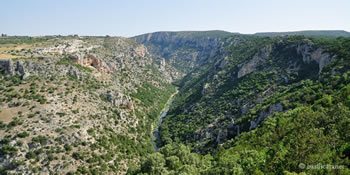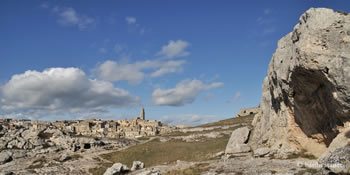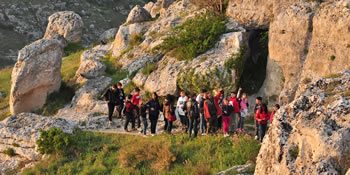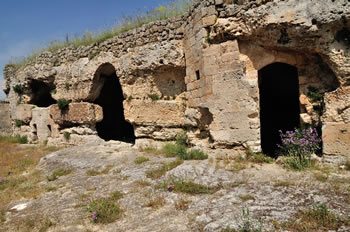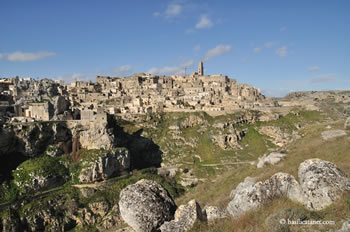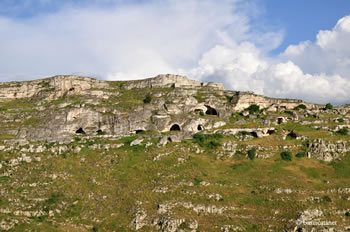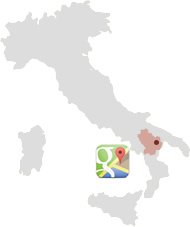The Natural and Historical Archaeological Park of the Rock-hewn churches, or quite simply called Matera’s Murgia Park, extends over 8,000 hectares in the areas of Matera and Montescaglioso.
In 1990 a regional law decreed the creation of the park with aim of protecting the particularly fascinating environment carved out by the ravines of Matera, Picciano and of the river Bradano. The area of the Park has been included in the UNESCO World Heritage Sites together with the Sassi of Matera.
The most ancient traces of human settlements around Matera can be found on the park: as well as the remains of the Neolithic villages and graveyards, there are also several wonderful examples of the rock art and culture which are probably among the most remarkable ever documented.
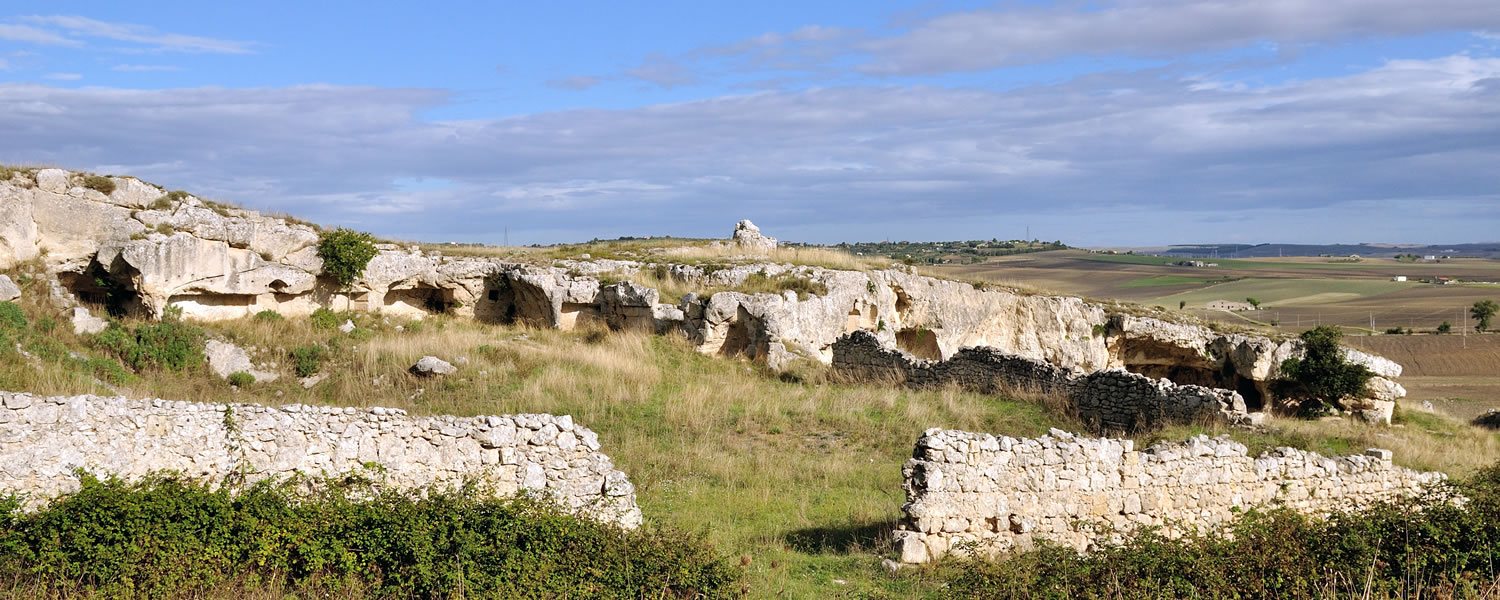
The area of the Park
This territory was inhabited as far as back as prehistoric times as is demonstrated by various fossils on display in the National archaeological Museum Domenico Ridola, by the dwellings in the Grotta dei Pipistrelli (the Bat Cave) dating back to the Paleolithic age, and the Neolithic villages of Murgia TImone, Murgecchia and Trasanello surrounded by trenches carved out of the rock. The clay pottery, known as Serra d’Alto, - a brown, terracotta, baked, ceramic decorated with geometric shapes and looping handles, often depicting animal life - takes its name from the hilly area around Matera. This type of artistry can be linked to the Neolithic clay pottery of Diana Bellavista, a red coloured pottery with ear-shaped handles, called after the Diana settlement in the Lipari islands the Bellavista cemetery in Taranto.
Over the centuries the territory was inhabited by shepherds and herdsmen who left their mark on the area: there are numerous villages carved out of the rock including San Nicola dell’Ofra, Cristo la Selva and the Saracene village, all of which have rock-hewn churches and cemeteries. Many of these structures had adjacent outhouses carved out of the rock, that were home to cattle or sheep, and built on a downward slope in order to let the liquid sewage slide down to the waste area. The outhouses also faced south in order to protect the animals from the cold northerly wind. There were also goat shelters, caves carved out of the high rocky slopes that were particularly suited to the roaming herds.
The rock-hewn churches
One of the most important features of the Murgia Park is the number of rock-hewn churches scattered throughout the area. Hidden by thick vegetation, located on the steep slopes of the ravine, and decorated with spectacular wall paintings, they are testimony to the devotion of the peasant population. The churches, partly carved out of the rock and partly built up, can have just one central nave such as the “Crypt of the Scaletta” or the “Madonna della Croce”, two naves such as the “Cappuccino Vecchio” or the “Cripta del Canarino”, or three naves as such as the “Madonna delle tre Porte” or “San Pietro sulla Via Appia”.
The churches, above all those built in the romanic period, have the same architectural and decorative features as those of the sub divo period: square columned pillars, walls that act as transepts, decorated arched walls and pronounced capitals, vaults embellished with circled domes, rounded ceilings and ornate cornices. Some of these churches are connected to the presence of Benedictine monks, such as The Saints’ Cave (Grotta dei Santi), today called The Crypt of Original Sin (la Cripta del Peccato Originale), which is one of the oldest in the entire region and whose walls depict frescoes dating back to the 9th century.
Sanctuaries
There are numerous sanctuaries in honour of the Blessed Virgin Mary such as the Palomba, the Madonna della Croce (Our Lady of the Cross), the Madonna delle Vergine (our Lady of the Virgins), Santa Maria della Valle Verde (our Lady of the Green Valley) and the Madonna della Murgia (our Lady of the Murgia Plain). Others are dedicated to the Crucifixion (Cristo alla Gravinella, Cristo la Selva and Cristo al Guirro) and others to the Archangel Michael (S. Angelo della Mensa, S. Angelo lo Cupo and the Crypt of S. Angelo Cozzo. A recurring theme on the walls of the churches are the paintings of St. Vito, patron saint of the peasants, and St. Nicola, patron of the shepherds, thus demonstrating the importance of religion in the lives of the peasants, shepherds and inhabitants of the Murgia plain.
The Park’s flora and wildlife
The park has a wide variety of plants, typical of Mediterranean woodlands, such as the downy oak, the Macedonian oak, the carob tree, and holm oak as well as the juniper, the mastic, the broom shrub, and also typical garrigue vegetation such as the cistus, the butcher’s broom, thorny thyme, the ferula and the asphodelus.
There are also various flowers such as the widow of the plain, the apulian bellflower, the Ionian helianthemum, the elegant convolvulus, the thomas flax, the thomas saffron, and the ofris matheolana - a small and rare endemic orchid.

There is also a wealth of wildlife: along the paths you are likely to come across porcupines, stone martens, foxes, weasels, badgers, wildcats and boars. You can also see various birds of prey including the Egyptian vulture, the common buzzard, the royal kite, the Lesser Kestrel, a small falcon that has become the emblem of the park, and that in springtime flies in from the African savannah to reproduce and then leaves in autumn heading southwest to pass the winter in the Sahara desert.
Informations
Ente Parco Archeologico Storico Naturale delle Chiese Rupestri del Materano
Via Sette Dolori, 10
75100 Matera
Tel. +39 0835 336166
Fax +39 0835 337771
>> info@parcomurgia.it



 Home
Home

